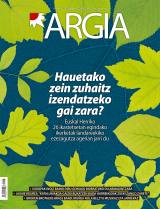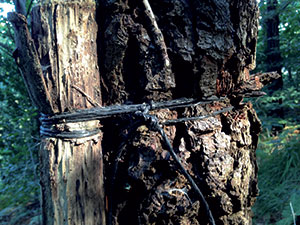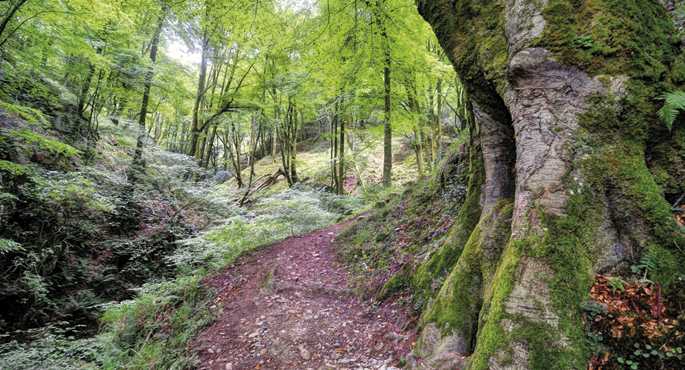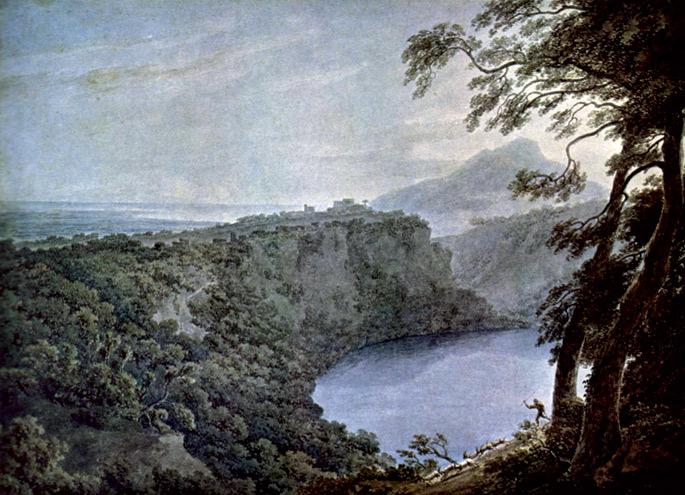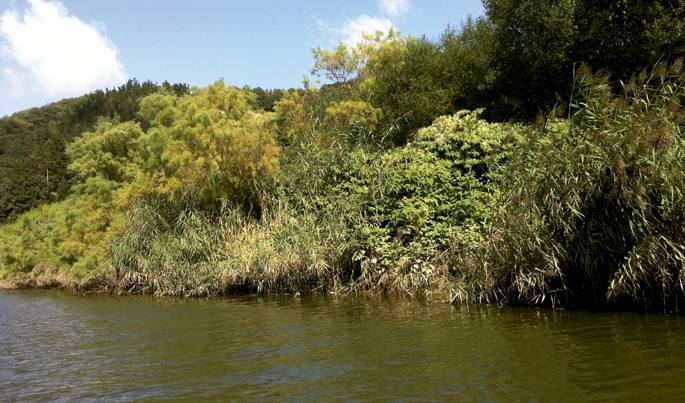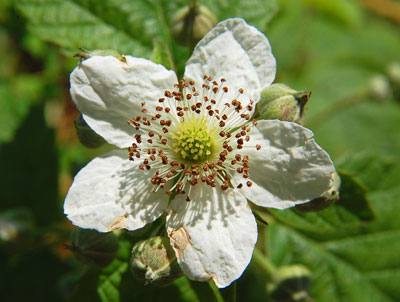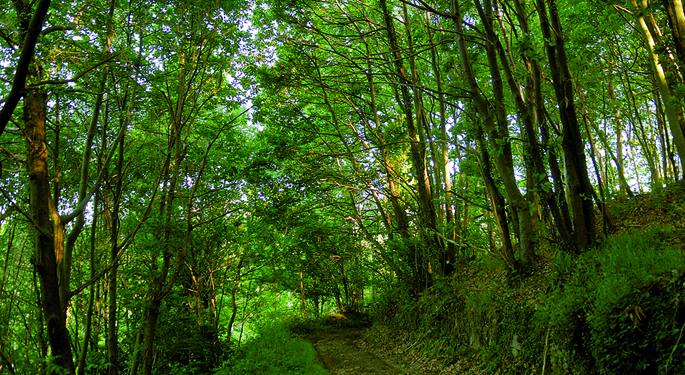Even though we have them in front of us, we don't see them.
- Looking where you look, you'll always find a plant near you. In the Basque Country we have 3,500 species, of which 225 are threatened. From generation to generation, however, interest and knowledge for plants has been declining in our society, and today we have a hard time naming the most common plants around us. In the 2001 study, botanists Wandersee and Schussler concluded the same thing in the United States and named what was going on: plant blindness, plant blindness. The research carried out in the Basque Country has revealed the level of knowledge of students and teachers.
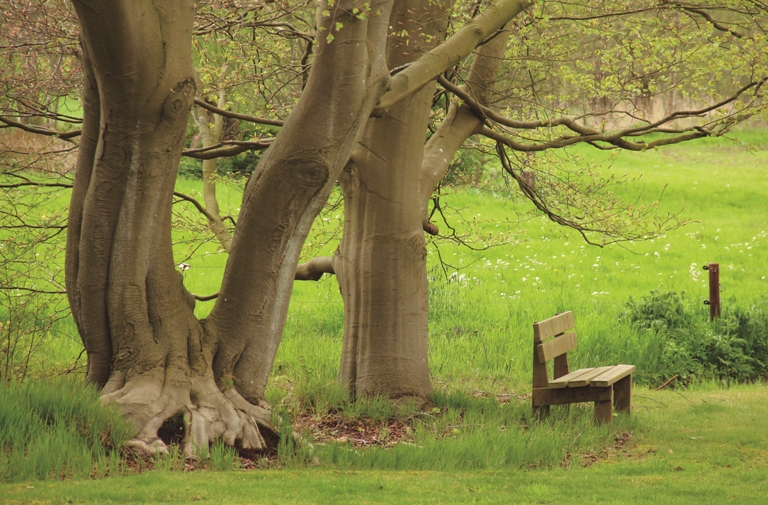
In formal education, according to the curriculum, it is essential that students have basic knowledge and contact of their environment, that is what must be taught in school. However, the assimilation of these contents is difficult if we do not have knowledge and interest in fauna and flora. According to different studies, teachers are more fond of animals and at school they spend much more time on the animal world than on plants. This can cause disinterest in plants since childhood. But in the Basque Country, what is the interest of teachers and students in the plants? Do you know the most common plants in the area?
To answer these questions, the research team of researchers from the University of the Basque Country and the Society of Sciences Aranzadi has launched two investigations. A diagnosis of the current situation has been made, essential before creating the appropriate teaching material for teachers and students.
For this examination, during the 2016-2017 course, 1,040 students from 12 to 14 years of age in 26 educational centers in the Basque Country were questioned. In addition to asking several questions about their interest in nature, students were asked to put 10 names of animals and plants to measure their knowledge. The data corresponding to the animals were released in ARGIA on 21-05-2017, at a meeting between the Lion and the wolf. Do children know the most common animals in the country? report. On the contrary, plants have not been published in writing to date. This same year they have been presented at two international conferences on Education in Science and Technology.
.jpg)
Each child knows an average of 5 names of native plants
In this study, students expressed great interest in animals and plants: 51% had a high or very high interest and very few (9%) said they had a low or very low interest. However, when comparing animals and plants, students obtained signs of blindness towards plants. The question was as follows: Who are the animals or plants that most interest you?
Only 76% of students opted for animals and 16% for animals and plants. Only 3% chose plants. As has been seen in many other countries, children are also more interested in animals. As Wandersee and Schussler concluded in the United States in 2001, the lack of interest in plants is very large, which means not paying attention to plants. These characteristics, in turn, make the degree of knowledge of plants low.
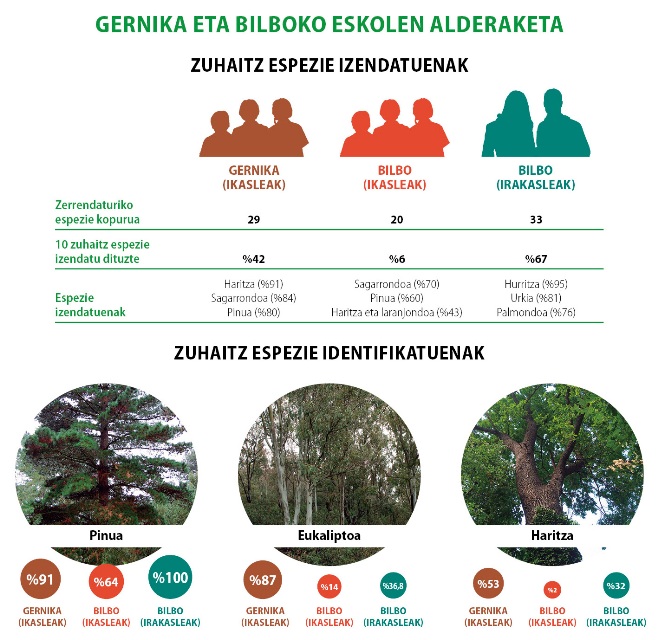
For the research, they were asked to
put 10
plant names and the 1,040 students who completed the questionnaire wrote an average of 5.4 plant names.
The students from the Basque Country were interested in the names of the plants they have in their heads, so they were asked 10 plant names and the 1,040 who made the questionnaire wrote an average of 5.4 plant names. This result is in line with the results of investigations carried out in Switzerland on the ground. The difficulties in designating plants are very great.
The list of plants answered by the students also provided more information: of the 5.4 plants mentioned by the students, 3.8 were native in origin. In the study carried out in the Baltic countries, most children know more indigenous species than outside, but as has also been seen in England and Germany, they are able to name very few species in the area; knowledge is low.
Among schoolchildren, those from smaller towns were the ones that designated the most plants (8.2 out of 10).
In
addition, most indigenous plants were declared by themselves
(6.8 out of 10).
Among schoolchildren, those from smaller towns (fewer than 5,000 inhabitants) were the ones with the most plants (8.2 out of 10 plants). They were also the ones that designated the most plants in the area (6.8 out of 10). The increased possibility of daily contact with nature in smaller villages is likely to influence the designation of the largest number of indigenous species.
Among the plants, the most designated by the students were those of edible and wild type, ahead of those of decoration or logging, although a quarter of our territory is covered by forest. Shrub species were more frequent than herbaceous or shrub species.
Thanks to the tree of Gernika…
The research carried out deepened the difference between the levels of knowledge of people in rural and urban areas. To this end, 45 students from the 6th grade of Primary, 11-12 years old, from Gernika and surrounding villages, in the center of the Biosphere of Urdaibai, completed a questionnaire about the trees. In addition, 53 students from a school in the city of Bilbao (6th EP) and 18 teachers (6th EP; age: The mean age of the respondents was 40 years.
The result is not much doubt: plant blindness has reached Euskal Herria.
In one section of the questionnaire, they were asked to write the names of 10 tree species. Only 42% of Gernika students wrote the 10 species requested, and among all, 29 trees were declared. A study conducted in Argentina also yielded similar values, and less than half of the students (32%) were able to name 10 plants. At the Gernika school, the most nominated were oak (named 91%), apple (84%) and pine (80%). As the oak tree is known as the “Gernika tree”, it is no wonder that the children of the area have declared this species. As Kellert concluded, this implies that in the knowledge of animals and plants, symbology also has strength. In fact, without the Gernika tree, how many Gernika boys and girls would you know the oak tree?
In the case of students from Bilbao, however, the number of species listed was 20, and only 6% of schoolchildren declared 10 trees. In this case, unlike Gernika, oak appears in the third most nominated place: apple (with a denomination of 70%), pine (60%) and oak and orange (43%) are the most repeated.
Among the students, fruit trees are well known. However, according to the results of Patrick and Tunnicliff, the designation of fruit trees does not indicate the knowledge of the tree, but rather identify the fruit. If you put it up to the height of the tree, you might not be able to identify it.
The teachers were the ones who declared the most tree species, totaling 33. Among teachers, 67% listed the 10 species, but in this case the first three species were different from the school ones: avellano (named 95%), birch (81%) and palm trees (76%).
Pine and eucalyptus before oak
In the second part of the questionnaire, they were asked to identify the 9 most common trees in Bizkaia: Ametza (Quercus pyrenaica), Oak (Quercus robur), Artea (Quercus rotundifolia), Eucalyptus globulus, Aliso (Alnus glutinosa), Pino radiis (Excelfaguus), Licar (Etta).
From the images of the 9 trees placed, an average of 2 were the ones that identified well both the faculty and the students. When comparing, no significant differences were observed in the level of knowledge of professors and students. Among the students, however, those from Gernika identified more trees (2.3), compared to those from Bilbao (0.8). Although in both cases the levels are low, research on the knowledge of animals and that carried out in Finland shows that the size of the residence can influence the relationship of its inhabitants with nature. Many of the Gernika students come from small towns in the area and have nature closer in their daily lives. According to these studies, rural children have a greater capacity to identify animals and plants.
The pine was the best
known by the students, with 91% and 64% results in Gernika and Bilbao, respectivamente.El
87% of the students of Gernika identified eucalyptus (14% of
those of Bilbao)
On the other hand, it should be noted that among the well-identified trees, pine was the one most known to schoolchildren, with 91% and 64% results in Gernika and Bilbao, respectively. It is also noteworthy that 87% of Gernika students identified eucalyptus (14% of those in Bilbao). Among the professors, pine was also the most identified tree; 100% recognized it.
These results are nothing more than a reflection of what today is the landscape of Bizkaia. In fact, a quarter of the land under 600 metres is covered by pine, and in coastal areas such as the Gernika area, eucalyptus plantations have increased considerably in recent years. These are the species that you see on a day-to-day basis, as Patrick and Tunnicliffe concluded in 2011, it's no surprise that these plants are the ones that they know the most. In addition, the characteristic shape of the needles (leaves) of the pines greatly facilitates the identification of this tree.
More than 90% of students have not identified ash, aliso, beech, birch and art
It is striking that pine, eucalyptus and oak have been identified. Of these three, one is indigenous and the other two come from outside. Also, the levels of identification of their most common trees have been very low. More than 90% of students have not identified ash, aliso, beech, birch and art among their students. In the case of oak, only 53% of those from Gernika were able to identify the plant, although at the time the plant was named 91%. Among the students in Bilbao, only one third of the teachers identified oak. In the case of the latter, he was the only professor who knew Pagoa. No teacher who knew her mother and her ally had been there.
Need for teacher training and appropriate material
Studies have shown that plant blindness also exists in the Basque Country. The low level of plant knowledge and interest has its consequences. As concluded by Lindemann-Matthies in 2011, or Gaston and Spicer in 2004, knowledge of species, together with interest in nature, is an essential factor in promoting understanding in the field of environment, biodiversity and sustainable development. If the objectives in the educational curriculum are to be correctly achieved, it is essential to pay attention to interest and knowledge when teaching.
The basic knowledge of biodiversity and the ecology of ecosystems and the availability of educational material based on the nearby environment would greatly contribute to teachers, both in the transmission of content and in the design of schools.
Several studies at
the European level state that in recent decades there has been a great drop in knowledge related to nature. All indications point to a decrease in plant knowledge. But without research, how do we secure it?
.jpg)
In the Burbunak eta etsayak project, interviews with 10 people between 60 and 90 years of age from Hernani during the years 2012-2013 showed a high degree of knowledge of these people. They had the knowledge acquired from their homes and 68 herbaceous plants in the area (excluding trees and shrubs) were declared. Although the sample of interviewees was small, it can be a good reference for the knowledge that older generations still have.
* The DVD “Burbunak eta etsayak” can be easily purchased at the Feria de la Luz.
Pinudian barrena bidea. Bidea ixtea komeni. Tarteka ireki egin behar. Gereta, ataka edo langa, zerbait jarri behar. Eta hari eusteko baldoa. Burdin hagarekin zuloa egiteko eta zur-mailuarekin jo eta sartzeko lanak hartu beharrean, errazena: aldameneko pinu tukurrari... [+]
In Italy, Nemi, Galian Luc, Lugo and Nemetobriga... There is no end to the list of sacred forests in the world. And they would certainly have been in our house! In the forests, fairs, parties, meetings, sacrifices -- what wasn't going to be done at another time. Forests and... [+]
In this time of the longest days of the year, if the work of orchards, fields, meadows, apples, etc. is advanced, the atmosphere encourages to climb to the peaks of the mountains. In short, as the days shorten and shorten, the hottest days of summer will arrive and, instead of... [+]
I'm in the sweet waters of the Oria River. A friend calls her Amazoria. At the Alan without Gila, from the sea bar, up to the height that allows the water load on the most vivid tides and down to the sea, you need to be with this kind of shows. Water tribute plants, the landscape... [+]
The news comes from South America: here we have the bush without thorns (Rubus fruticosus). The agricultural research institute INIAP of Ecuador has just presented a bush that does not produce thorns, a variant that bears the name of Andimora 2013.
Every time I remember... [+]
Two-thirds of the world lies, one-third of the world is a forest. 40 million km2 of forest per land, 7 billion for the population, 6,200 m2 of forest for each. One fifth of these forests around the world live in Russia, 47.9 per cent of their total land, that is, 809 million... [+]







